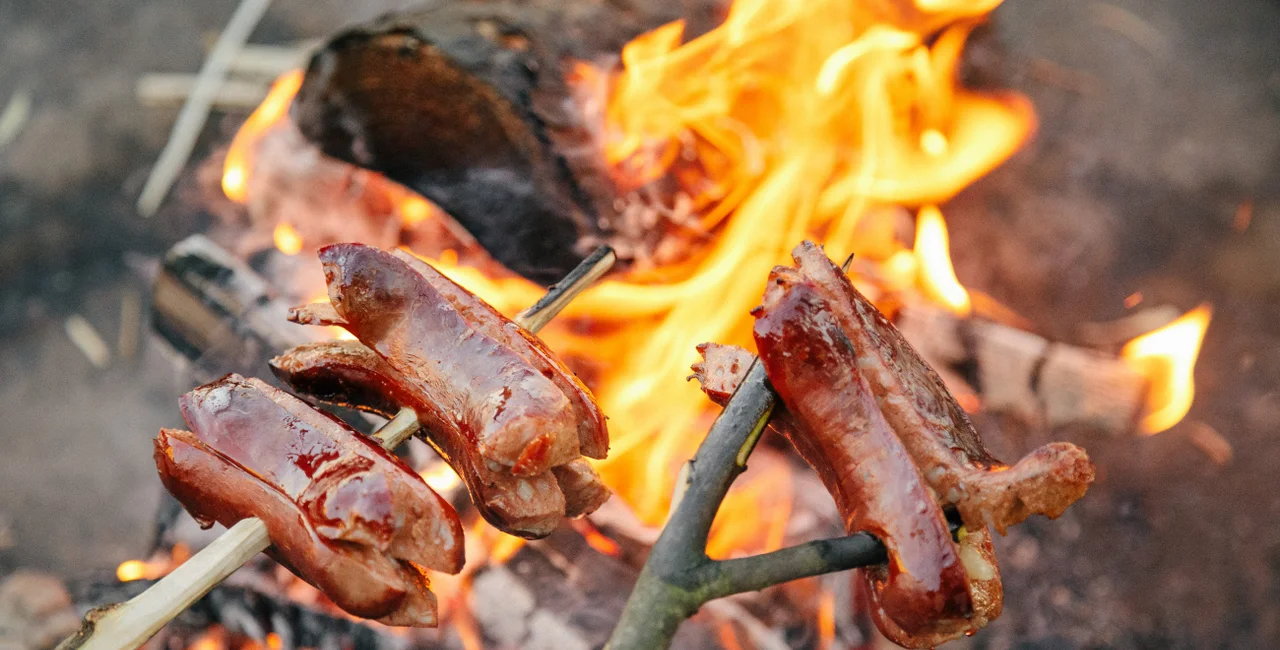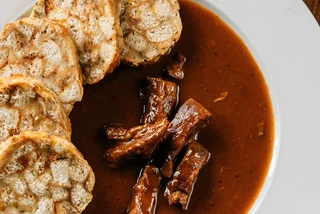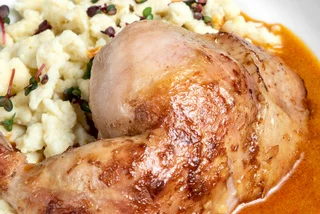On the night of April 30 to May 1, according to Czech tradition, bonfires are lit to symbolically burn winter in the form of straw witches for Čarodějnice celebrations. Once a pagan ritual, today the holiday is mainly about music, costumes, and gathering around the fire to roast fat sausages called špekáčky.
Where did this traditional Czech sausage come from, how is it made, and what's the best way to cook it? Butchers from Prague's Naše maso answer your most burning questions about this fireside favorite.
The first špekáček was introduced in 1891 (read more about its history here) and since then has become an essential offering at butcher's counters and a fixture at festive bonfires. Czech špekáček contains a combination of pork and beef spiked with špek (pork fat) throughout, hence the name.
Butchers from Naše maso prepare these sausages according to an original First Republic recipe.
"We season the mixture of meat and pork fat with salt, pepper, garlic, paprika, and nutmeg," says Ambiente's head butcher, František Kšána. The perfect ratio of meat, lard, and spices ensure juiciness and give the sausage a pleasantly spicy flavor.
Sausages on a string
This classic sausage is characterized by its plump shape, tied at the ends with string or an aluminum clip. "I don't mind the string, it looks better," says Kšána. It also has a practical use.

"In the past, you used to carry the sausage on a string and hang it from a tree using the string. If you hang a sausage made according to the traditional recipe in the shade and in a draught, it will gradually dry out and not spoil."
With or without 'horns'?
Though you can cook this sausage on the grill, most Czechs prefer to skewer it on a stick and roast it directly on the open flames. Cutting into the ends of the sausage before roasting is another time-honored technique.
"I like my špekáček uncut because it stays beautifully juicy," says Kšána. But he acknowledges that people often prefer to cut their sausages into a pattern called "rohy" (horns in Czech), and cook until golden brown. His tips for yielding top flavor and texture when making the cut?

"Don't cut the sausage in the classic 'hedgehog,' or criss-cross pattern, but lengthways, and more times than usual. Start at the tip of the skewer, but instead of ending where the sausage ends, boldly take the cut further, all the way to the other end. Cut the sausage like this on all sides. It browns more evenly and nicely inside," says Kšána. The finished sausage can then be easily cut into evenly browned slices.
Watch this video to see a Czech butcher's expert demonstration of how to properly cut the špekáček before roasting:
Roasting to perfection on open fire
"Never roast a sausage over the highest heat, keep the stick away from the flames, over the coals. It will then taste like it has just been pulled out of the smoker," advises Kšána. Serve with a dollop of mustard and a slice of traditional Czech rye bread.
If you have any leftovers from the bonfire, don't hesitate to eat them cold. You needn't cook the sausages again. But never eat a burnt sausage!
Where can you buy witches-night špekáčky that are expertly filled with a mosaic of lard bits? Head to the Naše maso butcher shop on Dlouhá Street or to the in-house butcher shop at the Kantýna restaurant. Or order home delivery via eshop.nasemaso.cz.
In the Czech Kitchen is a weekly column written in cooperation with the culinary experts from Ambiente. Established in 1995, the Prague-based collective of pubs, restaurants, and fine-dining outlets has transformed the Czech culinary landscape and lent to the widespread awareness of quality food service and production in Czechia. Follow their socials or book your table at www.ambi.cz.












 Reading time: 3 minutes
Reading time: 3 minutes 



















